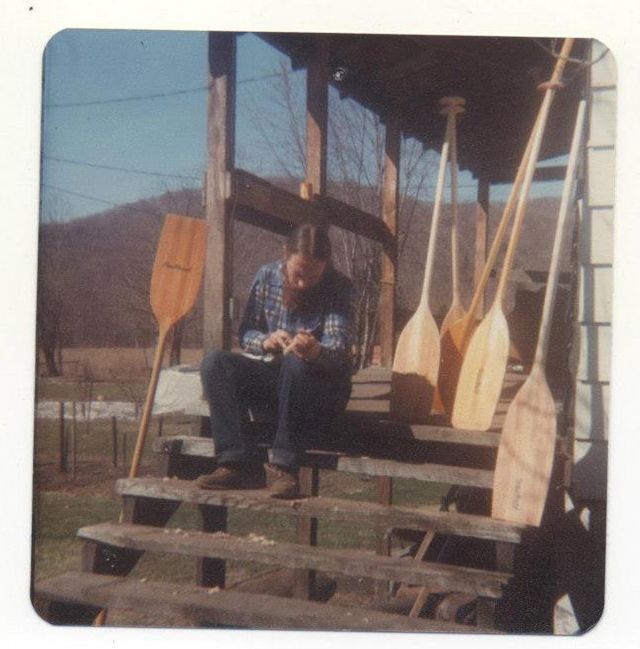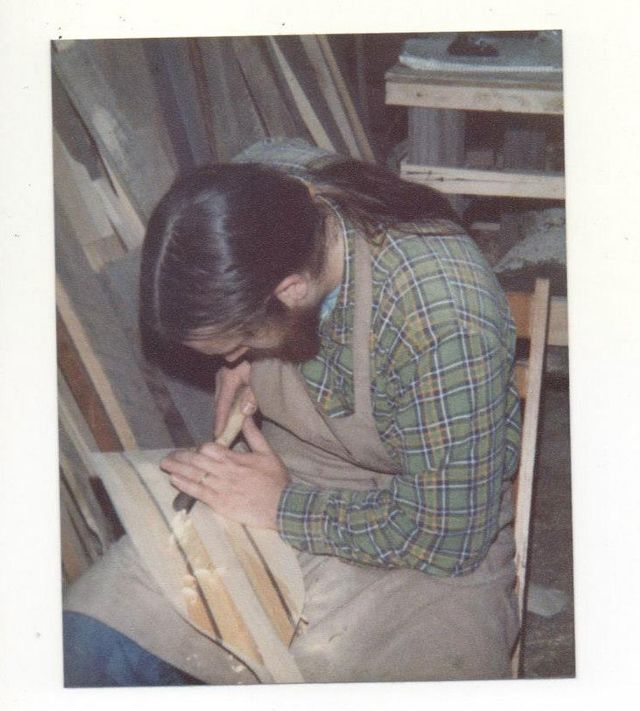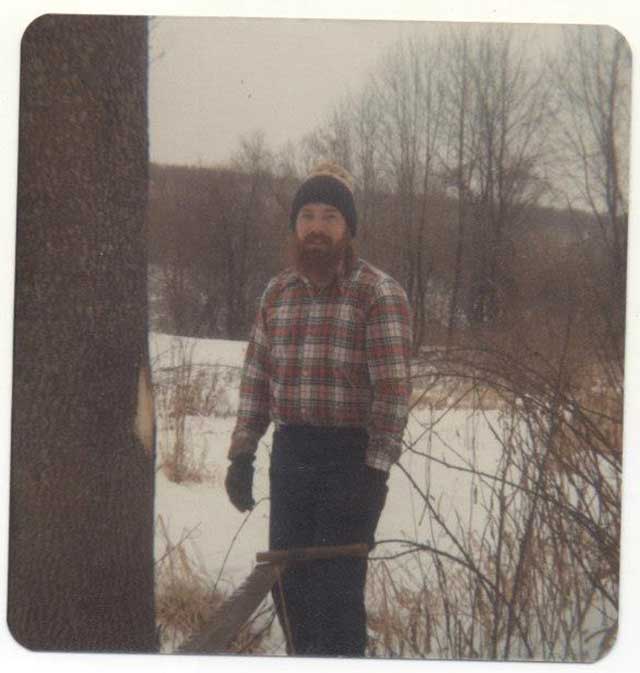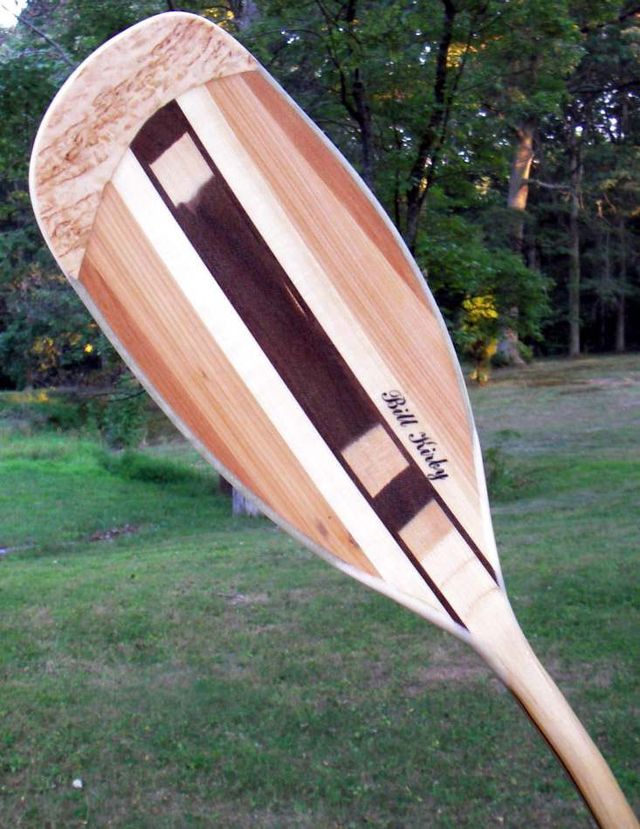
Suite.” Photo: Janis LeMieux
Roughly a month ago, on the evening of October 25, master woodworker and paddlemaker Keith Backlund took his last breath in the Stalker, Pennsylvania, home
where he grew up. Since then, a stream of remembrances and condolences have rippled across the Web.
A few important things
can be learned about Backlund from the on-point obituary written by
Charlie Walbridge for .
He was born in the Pocono mountains of Eastern Pennsylvania. He began making
wood paddles after taking up whitewater kayaking. He founded the mainstream paddle
companies Woodlight and Viking. He made sure to share whatever he learned
with a number of apprentices. He was one of a kind. “He knew wood and
woodworking better than anyone we know and his paddles were probably the finest ever produced,” wrote Walbridge.

LeMieux
The Walbridge obit linked to Marci Lynn McGuinness' 2002 , where even more can be learned about the paddlemaker's evolution. At seven
years old, he started carving axe handles, which he sold for $15 to $20 a pop. At
13, Backlund made his first canoe out of a $60 kit he ordered from ���Dz�’s
Life magazine, after saving all his pennies from selling Grit newspapers and
trapping muskrats. Soon after, he took his boat out
on the Delaware River, where he backendered. While swimming to shore with the canoe, he was
helped by a guy in a kayak. “I go, ‘Wow! Where’d you get that? I
need one of those!’” Backlund said. “New York City was about two hours away. My art
teacher was kind enough to drive me to the city, and I bought a kayak. I was
probably the only nut in about a hundred-mile radius that had a kayak. It cost
$260.”
Soon after, Backlund
started crafting paddles. In 1966, he sold his first one. By the early '70s, he
was working in a shop from 6 a.m. to 6 p.m. At first, he made
one every 60 days. But over the course of the next 30 years, between 1972 and 2002, his pace increased and he made roughly 8,000 paddles. He used a quiver of 25 knives to shape each stick while sitting on one wooden stool
that he had carved into the shape of a tractor seat.

still going down rivers.” Photo: Janis LeMieux
The obit and the oral history offer a look at the shape of the man, but it's a with remembrances that provides a sense of his finish. There, Janis LeMieux posted old photos with captions that come off the screen like banter. Other friends shared stories. Joe J. Pulliam said Backlund made him a 68″ flatwater
canoe paddle (“an
early SUP paddle….Keith was always ahead of his time!”) in exchange for
cleaning up his shop. Daiva Chesonia said Backlund made her a beautifully carved wooden spoon that she still uses to eat yogurt 22 years later. Students offered up stories from his teaching sessions. Eliza M.
Gilligan commented that when he saw her sanding a gnarly piece of veneer, he said it was “so crooked not even
a black snake could follow it,” and handed her a new piece to attack. John
Mason said when he came in to the shop, Backlund made sure to preach his three
tenets of the Backlund School of Home Business. “Never let business interfere with
your personal affairs. Never argue with experts. If not for the last minute,
most things wouldn't get done.”
The different remembrances offered a variety of looks at Backlund, but one brief comment from Daniel McMullen best sums up his legacy: “Those Backlund sticks were one of a kind
pieces of art, just like you. Farewell
Keith, you will live on in the hands of many…”

—Joe Spring